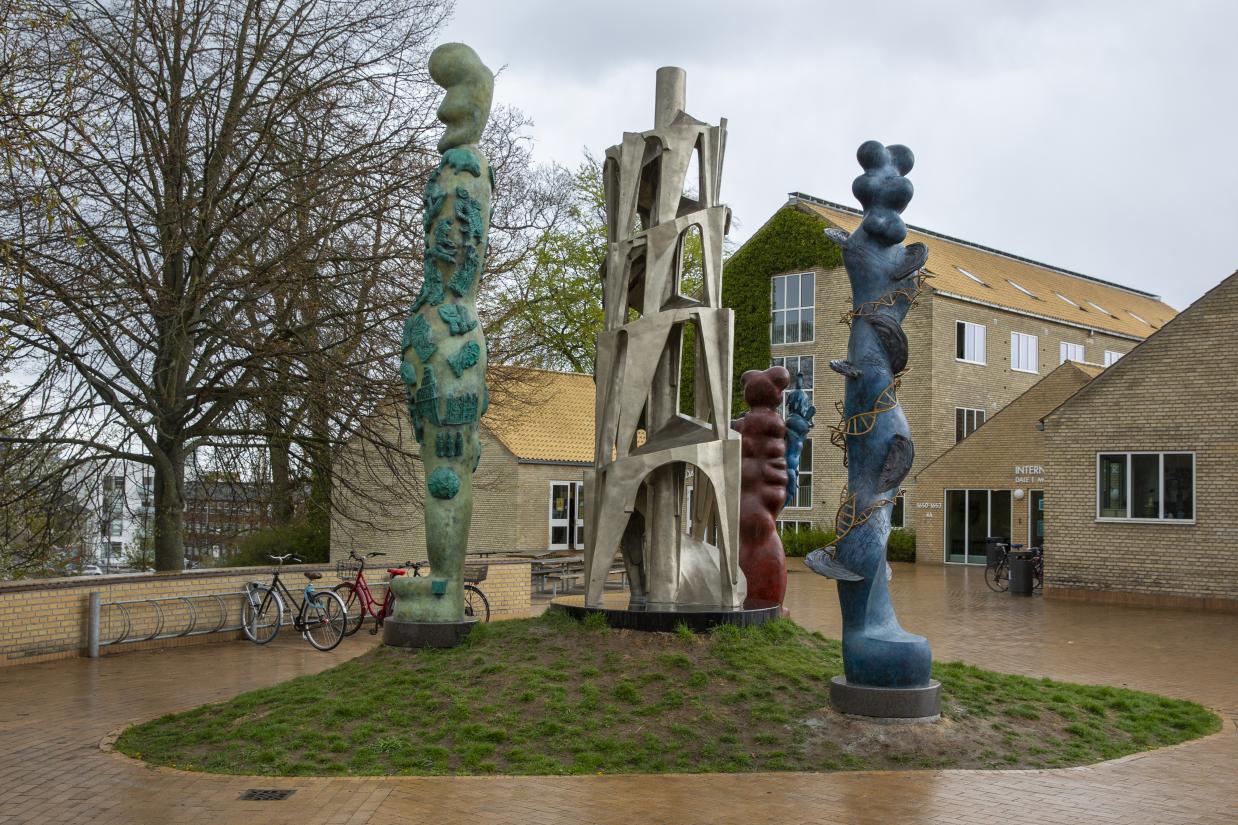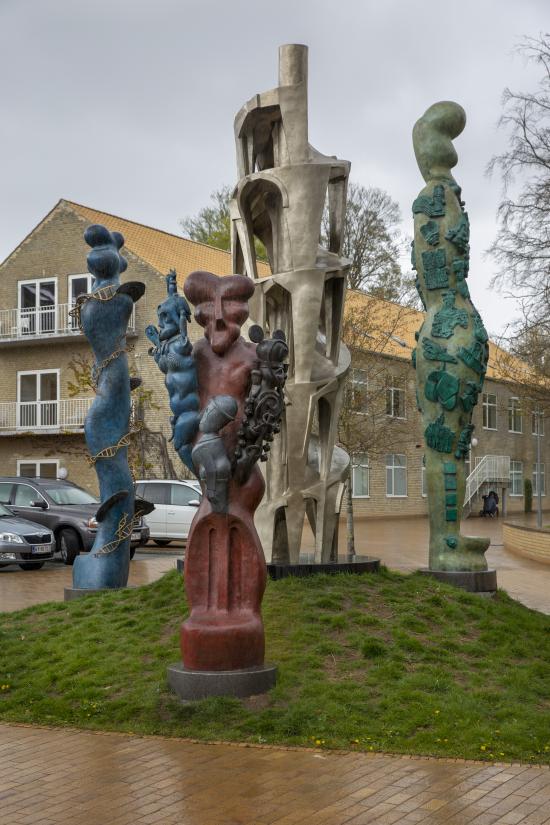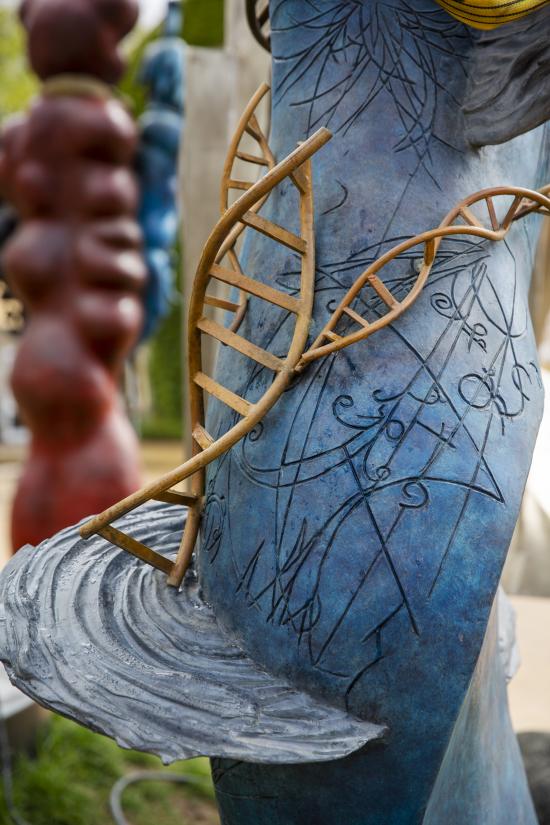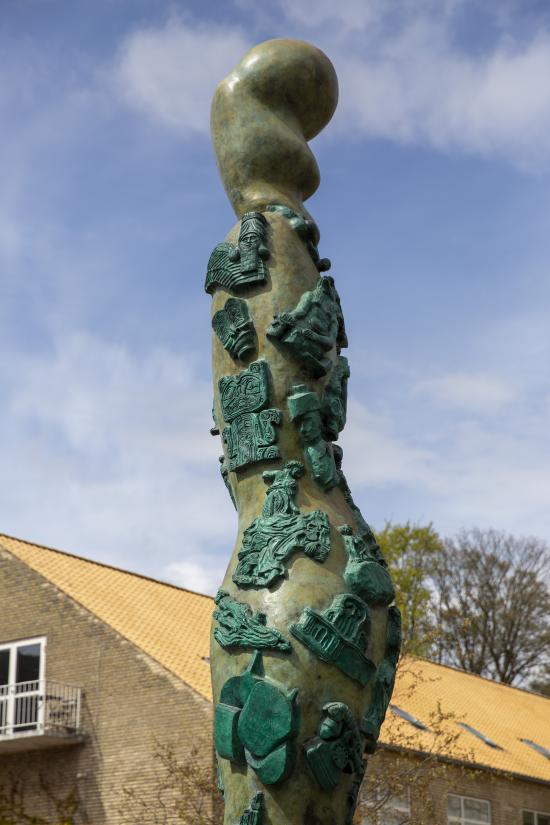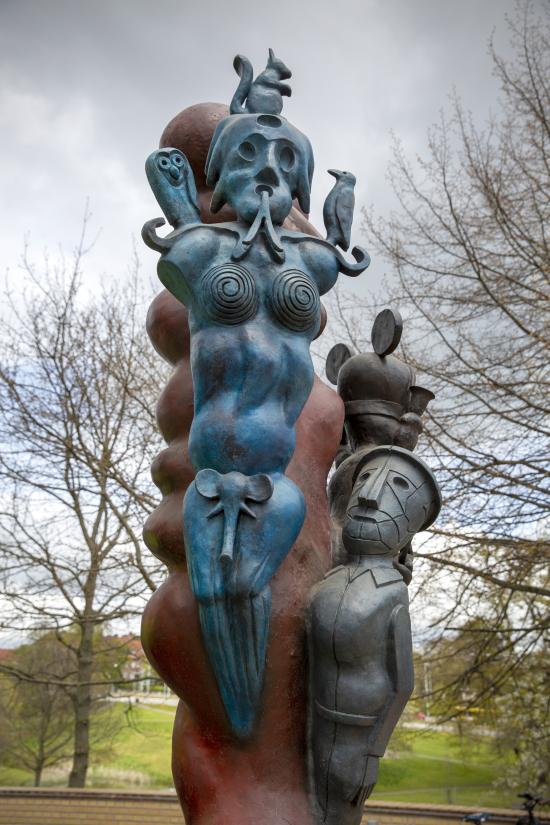A new sculpture has found its way to University Park in Aarhus. Now students, staff and visitors can be impressed and inspired by Bjørn Nørgaard’s Ars – Scientia – Justitia, which has been erected in the southern end of the park in between Aarhus University International Centre and Aarhus Institute of Advanced Studies (AIAS). Nørgaard’s sculpture, which is a donation from the New Carlsberg Foundation, was commissioned based on recommendations from Aarhus University’s art committee:
‘Art has been a natural element of Aarhus University ever since the university was founded. Art and science belong together and inspire each other, and art can offer a different outlook and understanding of the world than what we read in textbooks. I hope that the university’s students and staff as well as local citizens will experience the new sculpture,’ says Bodil Due, former dean of the Faculty of Humanities at Aarhus University and chair of the university’s art committee.
A sculpture designed to be used
The sculpture consists of a leaning tower surrounded by three human-like pillars. The ‘Ars’ pillar symbolizes art and faces the grass and trees of the park. The ‘Scientia’ pillar, which represents science, faces the university buildings, while the ‘Justitia’ pillar, which symbolizes the justice system, faces the city. Bjørn Nørgaard drew inspiration from the Danish scientist H. C. Ørsted, who believed that the three elements are the pillars a modern society rests on:
‘The sculpture is a reminder that any power structure must be subjected to criticism and challenge from free arts, free research and an independent court system,’ says Bjørn Nørgaard, who encourages visitors to the University Park to use the sculpture – for example, you can sit down and lean against it.
Stine Høholt, a board member of the New Carlsberg Foundation, points to the sculpture as a significant pieces in Bjørn Nørgaard’s already impressive body of work:
‘Despite the skyward form and large scale, this is a sculpture that wants to meet us at eye level and seeks to inspire us to reflect on the development of our society, including, not least, the institutions that act as guarantors of our democracy. That makes it an excellent match for the work of the university,’ she says.
Art and science are connected
The staff at AIAS, who are neighbours of the sculpture, are excited about the new work of art, and a meeting has been scheduled between the scientists at AIAS and Bjørn Nørgaard, as Søren Rud Keiding, director of AIAS, explains:
‘Artists and scientists are actually closely related. On the basis of knowledge and skills, both artists and scientists are challenging the existing world around us and point us in new directions. That is why we at AIAS are thrilled by the new sculpture, and we are very much looking forward to the meeting between Bjørn Nørgaard and the AIAS fellows. Here, we are going to discuss how to use imagination and abstraction as working tools in both art and science.’
About Bjørn Nørgaard
Bjørn Nørgaard (b. 1947) has been one of the most significant figures in Danish art since his debut in 1965. As a member of the experimental art scene and, not least, the experimental Copenhagen art school ’Eks-skolen’, he took, from the outset, a radical, provocative and supremely confident approach in reformulating art and, especially, its relationship with public institutions and reality. Ethical and political concerns are fixtures in Nørgaard’s humanistic stance, and a persistent engagement in the relationship between art and the world is manifested in his works, not least in those of his works that challenge and reshape the public space.
